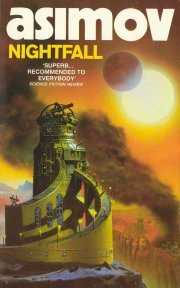The 20′ By 20′ Room blog has apparently disappeared, but here’s something from Neel Krishnaswami that I think is too useful to let slide into the digital vortex:
In our last Nine Worlds session, I introduced Perseus, a captain of the Lunar space fleet, who was married to Nick’s PC’s wife. In the session before that, the players had been boarded by a Lunar ship which had confiscated our engineer’s robot as technological contraband. That ship had a captain, who went unnamed. So when I first mentioned Perseus, the players’ first response was “Hey, is he the same guy?” and my answer was, “Of course — the law of conservation of NPCs demands it!” The players chuckled, and we went on playing.
The principle of conservation of NPCs actually is one of my GMing strategies. Whenever I introduce a new conflict into the game, I try to see if existing NPCs can be integrated into this role before I consider introducing a new NPC. I find two big benefits from doing this.
The first is simply that the size of the cast stays under control — I’ve run plenty of games where NPCs multiplied without limit, and that meant that months of real time could pass before we saw an NPC reappear. This limits the amount of shared history the players can develop with a character, and is often a little unsatisfying as a result. So reusing NPCs helps prevent the narrative from fizzling out.
Secondly, re-using NPCs means they will have multiple facets relevant to the players. In our 9W game, Perseus’s family became a center of the narrative — each of the players was off doing something else, but they affected each other because their actions influenced Perseus and his family. So despite the characters being separated the players were still interacting with each other.
This is great advice, and it can actually be generalized beyond NPCs.
For example, when I was first designing the Western Lands (the campaign setting I typically use for my D&D campaigns), I decided that there would only be a single, limited pantheon of true gods. The pay-off has been that whenever I design a new adventure, I’m forced to figure out how to make my ideas fit within the context of that existing pantheon. This has yielded particularly rich results when I’m using published adventure modules that call for various gods, forcing me to figure out how radically different concepts can be rationalized within a limited framework.
As a result, my campaign’s religions are now rich with saint cults, historical holy symbols, disparate practices of worship, and a rich panoply of relics. Instead of spreading all of that work on fantasy theology out thinly over a multitude of gods, the effort has instead steadily deepened and enriched the Pantheon.
Similarly, the conservation of NPCs will cause drama to accumulate instead of dissipating: Current events will be more deeply informed by past events, and you’ll find all kinds of unexpected synergies and memorable recurring themes cropping up spontaneously.













